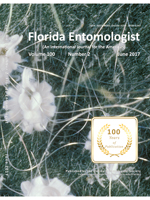The yellowjacket, Vespula squamosa (Drury) (Hymenoptera: Vespidae), is the only eusocial wasp that commonly has 2 social forms (monogyne and polygyne nests), has annual and perennial nests, facultatively usurps the nests of conspecifics, and parasitizes other vespine species. Thus, V. squamosa is ideally suited for examining various phenotypic and genetic variables as they relate to different social alternatives in the context of kin selection theory. In this study, we compared various metrics relating to reproduction for queens in monogyne versus polygyne nests including queen abdominal weight, fertility, egg number, egg size, and worker relatedness. Monogyne nests (N = 7) and polygyne nests (N = 5) were collected from Georgia and Florida, USA. Examination of nest comb material indicated all polygyne nests were perennial; the number of workers in these nests varied from approximately 700 to 36,379. All monogyne nests were annual and had fewer than 1,500 workers. Single queens were more physogastric than their polygyne counterparts and had significantly more mature eggs per ovary. Polygyne queens, however, had significantly larger eggs but produced smaller workers. Twelve percent of the queens in polygyne nests were either devoid of sperm or did not have full spermathecae (n = 142), whereas the spermathecae of single queens (n = 7) were replete with spermatozoa. Mean genetic relatedness among workers in perennial, polygyne nests suggests these nests include multiple egg-laying queens.
How to translate text using browser tools
1 June 2017
Reproductive Partitioning in Vespula squamosa (Hymenoptera: Vespidae)
Stephanie Stewart,
Gary Fritz,
Ann Fritz,
Anthony J. Deets

Florida Entomologist
Vol. 100 • No. 2
June 2017
Vol. 100 • No. 2
June 2017
avispa chaqueta amarilla del sur
polygyne
reproducción polygyne
reproduction
southern yellowjacket




